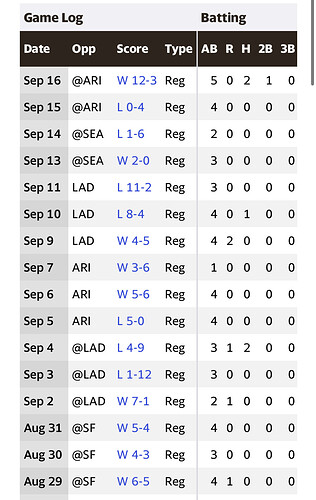From 2021…
Looks like we have a winner.
The shot rate doesn’t matter though. The outcome measure is just team points per possession while the player of interest is on the court, so any way the team can find more points will be ++ to that player. If Player A can mostly pass it to wide open scrubs instead of taking contested shots, those scrubs may do well facing no defense (see: 08/09 Mo Williams playing with Peak Lebron). The meta point is that you can’t compare players on different teams using APM which entirely defeats the purpose of APM. In fact, it’s not even clear to me how well it works within teams because they seem to imply that the worse player receives credit for spillover effects, which I take exception to.
With respect to baseball, I’m not saying that baseball data faces a similar endogeneity problem. I’m saying that endogeneity falls within the class of basic dagnostic checks required to clear even the lowest bar for this type of work. The APBR modelers are at least using accepted parametric statistical methods like ridge regression, and since we know the underlying theories and assumptions behind ridge regressions we can have meaningful conversations about it.
Why should we have confidence that WAR or other baseball metrics are even this good? As far as I can tell, they are just completely making it all up. I mean WAR isn’t actually estimating from a regression or anything, it’s just an ad hoc equation that takes (mostly) other ad hoc values as inputs while applying fudge factors to make the whole thing work. Ok, cool? What am I supposed to do with that? I have no way to evaluate it other than on a strictly prediction error basis.
I think I’m going to have to surrender on this conversation because I don’t have the depth of knowledge about the details of these calculations that you do.
The one thing that I’m a little curious about, though, is that I’m detecting a certain extent of nihilism in your posts - that it is fundamentally impossible to apply a plus/minus type of measure to effectively measure player performance in team sports, particularly in sports like basketball with a high degree of player complementarity. Is that an accurate description of your view? Or is it more accurate to characterize your view as people are just doing it badly and placing too much reliance on this type of measure?
If it’s the latter, then I doubt we end up agreeing on all that much.
It’s the latter. I’ve been looking for about an hour now to see if anyone has ever addressed this and only came up with one paper that makes these points. Those concerns are mostly in section 1.1 Problems with WAR which is short. If you don’t feel like laboring through the whole paper, I suggest skipping to 5. Results since that’s the most interesting part.
While WAR is comprehensive and easily-interpretable as described above, the use of WAR as a statistical measure of player performance has two fundamental problems: a lack of uncertainty estimation and a lack of reproducibility. Although we focus on WAR in particular, these two problems are prevalent for many measures for player performance in sports as well as statistical estimators in other fields of interest.
WAR is usually misrepresented in the media as a known quantity without any evaluation of the uncertainty in its value. While it was reported in the media that Miguel Cabrera’s WAR was 6.9 in 2012, it would be more accurate to say that his WAR was estimated to be 6.9 in 2012, since WAR has no single definition. The existing WAR implementations mentioned above (fWAR, rWAR and WARP) do not publish uncertainty estimates for their WAR values.
Even more important than the lack of uncertainty estimates is the lack of reproducibility in current WAR implementations (fWAR, rWAR and WARP).
[…]
This is frustrating since these WAR implementations are essentially “black boxes” containing ad hoc adjustments and lacking in a unified methodology.
Julio Rodriguez might 30-30 in his rookie campaign
Happy they’re poised to playoff
I think the technical turn is Hooey.
Aaron Judge in a 3-way race for the AL batting title - would win him the triple crown.
.001 out. Nutty.
Wait wut.
I thought that the TC has been changed to War, exit velocity and OBP+.
Alcantara has 7.0 bWAR and 4.8 fWAR. That’s a pretty major and important difference!
great doyers/giants game, i cant believe if they win theyre already over 100 wins, fuckin insane year, insane team, it makes me think there needs to be payroll cap in the game, this shit isnt even fair
dont lose to the giants please jfc
it was the bottom of the 10th with 2 on and dude scores a runner making it 3-2 and all 14 of the crowd barely cheers, then they zoom into fans and they all look like they just want to go home.
oh god a roberts pitching change bottom of the 10th two out bases loaded, gg everyone, fuck
eta: holy fuck that was insanely close, freeman goat
Compare:
Career Batting Stats
Player A
![]()
![]()
Player B
![]()
![]()
.
.
.
Career Pitching Stats
Player C
![]()
![]()
![]()
![]()
Player D
![]()
![]()
![]()
![]()
Is this one of those “2 of these are Shohei Ohtani and the other 2 are a HOF batter and a HOF pitcher” things?
Yeah, more or less.
A: Giancarlo Stanton
B: Shohei Ohtani
C: Max Scherzer
D: Shohei Ohtani
The most shocking thing about this is the Angels actually won that game.
